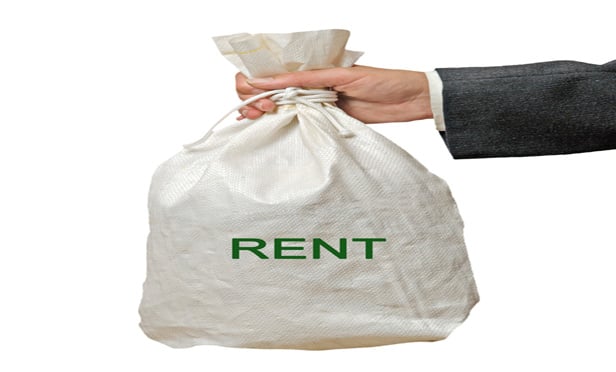Features

Maryland Appellate Court: COVID-19 Restrictions Not Excuse for Tenants' Failure to Pay Rent
Looking primarily to states like Connecticut for guidance, the Appellate Court of Maryland concluded that economic challenges stemming from COVID-19 executive orders themselves are not sufficient to establish the affirmative defenses of frustration of purpose and legal impossibility for failure to pay rent.
Features

Seven Commercial Real Estate Investment Strategies for 2023
With the year starting out amid uncertainty and no small amount of pessimism, there are certain strategies that promise to play well amid the environment. Read on to find out what will work in 2023.
Columns & Departments

IP News
Patent Infringement and Trade Dress In the Ninth Circuit
Columns & Departments

Bit Parts
Breach-of-Contract Claim Can Continue Over Refusal to Exercise Option to Retain Anti-Vaccination Actress California Court Rules on Intersection Between Anti-SLAPP Law and Movie Trailer
Features

Duties of and Risks to Directors and Officers of Insolvent Enterprises
Traditionally, the bankruptcy risk for D&Os has been fairly low. Several recent developments have, however, shifted the landscape somewhat and altered the risk profile.
Features

Online Extra: In 'Landmark' Win for Talc Plaintiffs, Third Circuit Dismisses Johnson & Johnson Unit's Bankruptcy
On Jan. 30, the U.S. Court of Appeals for the Third Circuit reversed a bankruptcy judge's decision, concluding that Johnson & Johnson subsidiary LTL Management was not in financial distress at the time it filed its Chapter 11 case in 2021.
Features

Is Trademark Protection Going to the Dogs?
The Ninth Circuit held in VIP Prods. LLC v. Jack Daniel's Properties that VIP's "Bad Spaniels" dog toy mimicking the appearance of a Jack Daniels whisky bottle was protected expression under the First Amendment. The Supreme Court granted cert in November 2022 to consider the principal question whether humorous use of another's mark on a commercial product should be assessed under Rogers or the traditional multipart test of likelihood of confusion.
Features

Court Declines to Block Retroactive Application of HSTPA
The Housing Stability and Tenant Protection Act amended the Rent Stabilization Law and, among other draconian changes, severely curtailed landlords' incentives to modernize and otherwise improve rent regulated apartments by limiting the ability to recover the costs of individual apartment improvements (IAIs) to vacant apartments.
Features

Development Issues for Tenants to Consider In Build to Suit Leases
There are several issues and terms to consider related to the development process that differentiate build to suit leases from a standard commercial lease that are important for the tenant to understand to effectively manage costs and effectively protect itself from delays in the development schedule.
Features

U.S. Bankruptcy Court Denies Chapter 15 Recognition to a Case on the Isle of Man
Cases interpreting Chapter 15 of the Bankruptcy Code after it was enacted in 2005 often addressed basic issues, such as whether a foreign debtor must have property in the U.S to file a case there. But even when there's no property in the U.S., there's an easy remedy: the foreign administrator can deposit a retainer payment with its U.S. law firm.
Need Help?
- Prefer an IP authenticated environment? Request a transition or call 800-756-8993.
- Need other assistance? email Customer Service or call 1-877-256-2472.
MOST POPULAR STORIES
- The DOJ's Corporate Enforcement Policy: One Year LaterThe DOJ's Criminal Division issued three declinations since the issuance of the revised CEP a year ago. Review of these cases gives insight into DOJ's implementation of the new policy in practice.Read More ›
- Use of Deferred Prosecution Agreements In White Collar InvestigationsThis article discusses the practical and policy reasons for the use of DPAs and NPAs in white-collar criminal investigations, and considers the NDAA's new reporting provision and its relationship with other efforts to enhance transparency in DOJ decision-making.Read More ›
- The FTC Gets Into the College Athlete NIL GameAs national champions are crowned in men's and women's basketball, hundreds of thousands of college athletes are entering the influencer marketplace for the first time and now find themselves attractive candidates in the fast growing influencer marketing arena. With influencer marketing potentially providing a 5x return on investment, many brands are eager to get into the industry, but it doesn't come without risks as the FTC Commissioner is taking a closer look at the use of influencers for marketing.Read More ›
- The DOJ's New Parameters for Evaluating Corporate Compliance ProgramsThe parameters set forth in the DOJ's memorandum have implications not only for the government's evaluation of compliance programs in the context of criminal charging decisions, but also for how defense counsel structure their conference-room advocacy seeking declinations or lesser sanctions in both criminal and civil investigations.Read More ›
- The Roadmap of Litigation AnalyticsLitigation analytics can be considered a roadmap of sorts — an important guide to ensure the legal professional arrives at the correct litigation strategy or business plan. However, like roadmaps, litigation analytics will only be useful if it's based on data that is complete and accurate.Read More ›
